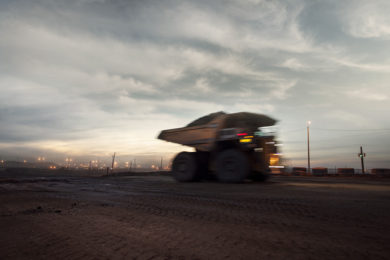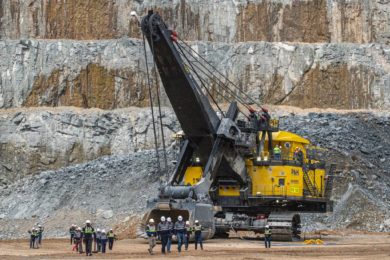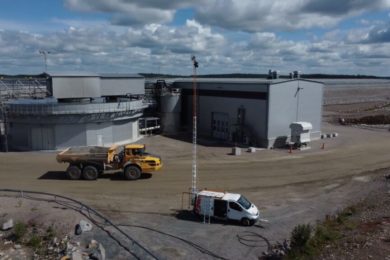Northern Alberta’s two oil sands giants and neighbours are finally coming together. Suncor, as 58.74% owner of the Syncrude Joint Venture, has announced that it, together with the other Syncrude joint venture owners – Imperial Oil Resources Ltd (25%), CNOOC Oil Sands Canada (7.23%) and Sinopec Oil Sands Partnership (9.03%) – have agreed in principle for Suncor to become the operator of the Syncrude project by the end of 2021. The agreement still requires formal approval from each of the owners.
“This presents a significant strategic opportunity for Syncrude and the joint venture owners,” said Mark Little, Suncor President and CEO. “We believe this transition will help build on the progress made to date and unlock significant value. By capitalising on the collective strength of our regional operations, synergies of C$300 million annually are expected, making Syncrude even more regionally and globally competitive as we work together to achieve a Syncrude cash operating cost per barrel of C$30/bbl (US$23/bbl) and achieve 90% utilisation. Initiatives like the Interconnect Pipelines have proven that by collaborating with a shared vision to improve operating performance and efficiencies, we can achieve more.”
The bi-directional pipelines connecting Suncor’s Base Plant and Syncrude’s operations, which are now complete and being commissioned, will provide increased integration and operational flexibility between the two assets. Adding Syncrude operatorship to Suncor’s current operations – Fort Hills Ltd Partnership, Suncor’s Oil Sands Base Plant and Suncor’s in situ assets – Suncor says will mean a stronger regional operations model to drive greater competitiveness across all assets.
“As neighbours for almost 50 years, Syncrude and Suncor have enjoyed a close relationship and a long, proud history in the region,” added Little. “Many families have members who work at both operations and both operations share a deep commitment to the community working closely with the Regional Municipality of Wood Buffalo and Indigenous communities and partners. We will be able to build on our collective strengths to become stronger together.”
Suncor’s confidence in the Syncrude project and the opportunity to improve its operational performance is evidenced by Suncor’s strategy to increase its ownership in Syncrude. Since 2016, Suncor has grown its ownership from 12% to 58.74% through acquisitions.
But what does this mean for the mining fleet at Syncrude and more specifically its roadmap to autonomy? Working with Komatsu dealer SMS Equipment, Suncor is rapidly rolling out its autonomous haulage program across its sites – the Fort Hills fleet of 980Es will be all autonomous by the end of this year. Millennium will have the largest fleet of 85 autonomous trucks running by 2023 (930E and 980E) while North Steepbank was the first and saw its fleet of 18 trucks (mainly 930E) switch to AHS in 2018.
In February 2019, Mark Little had this to say on Syncrude’s likely autonomy scenario: “Syncrude is different, one of the things that opened up the opportunity for us to do autonomous haul trucks [Millennium] right now was we came to the end of the natural life of our fleet. And so we had to decide how we were going to move forward and our view was is if we were going to invest in a new fleet, we should make sure that it was autonomous and we worked all the various technology. Syncrude isn’t at that stage. We would expect that this would be something they would look at significantly, and we have a lot of experience with it by the time they get to their fleet turnover, which is several years out.” That point happens to be when Suncor takes over.
But there is a big difference between the two sites – unlike Suncor’s use of electric drive Komatsu ultraclass trucks across the board, Syncrude has a large Cat mechanical drive 797 fleet that has been deployed working with Cat dealer Finning Canada. It purchased six 797 haulers out of 30 initial test prototypes built by Cat. The 17-100 unit was the first truck acquired in July 1999, with all six rolling out in January 2000. Doubling their expected shelf life, the original six are still running at Aurora’s mine today. Syncrude currently has 33 active 797 haulers at its Mildred Lake site and 47 active at Aurora – that’s 80 trucks, which it has also adapted to allow for higher 380 ton payloads.
So Syncrude could retrofit autonomy on its 797s as Imperial Oil is doing at Kearl (22 so far with 25 by the end of the year and all the 75 to 80 trucks by 2023). But some of the older 797s are likely coming to the end of their life so another option would be to buy “new” autonomous haulers – and there Suncor may opt for Komatsu 980Es to replicate what it is doing at its existing sites – or stick with the Cat ultraclass as that is what Syncrude has traditionally used and opt for new autonomous 797F CMD machines – or even select Cat’s electric drive 798 AC and use them as part of an autonomous fleet – as this new model has already been tested in the oil sands.
The decision is likely to come down to comparing the relative performance of the autonomous 797s at shareholder Imperial Oil’s Kearl versus the autonomous 980Es at Fort Hills. But it will also come down to fleet management systems which play a crucial role in autonomous haulage systems – Syncrude uses Hitachi-owned Wencomine & Suncor uses Komatsu-owned Modular Mining’s Dispatch system. Syncrude could keep Wencomine if it retrofits the existing Cat 797s. But it may be that the cost of converting to using Modular FMS at Syncrude to facilitate use of Komatsu trucks would be a step too far. Equally going for new Cat auto trucks would mean the latest MineStar CMD FMS technology being deployed.
Suncor is also using a Nokia 4G LTE network, as are most of the mines that are deploying autonomous Komatsu trucks – while Syncrude uses a wireless mesh network. This will likely be part of the discussions as well.
Then there are the economies of scale to be considered and the costs that would be saved from a maintenance point of view of having two large ultraclass truck fleets of the same type with the same parts etc.
But it is worth remembering that different autonomous fleets across two mines in the same organisation is not without precedent – Teck is using Cat 793F CMD autonomous trucks at Highland Valley Copper while at its Elkview coal operation it is using a Komatsu 930E autonomous fleet.










